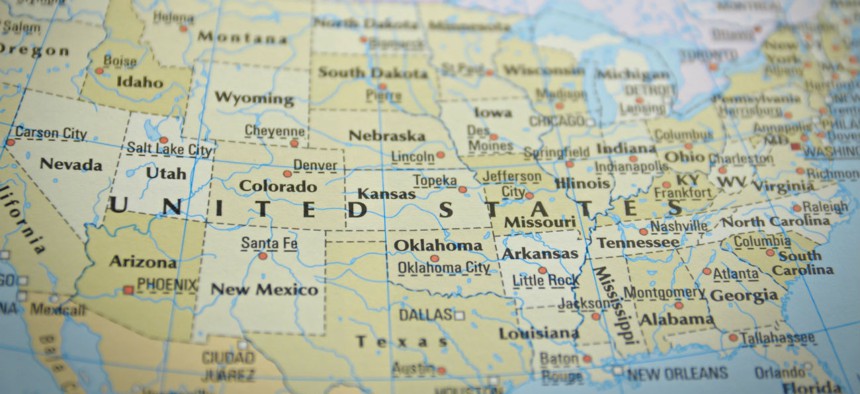
By Robert_Chlopas / Shutterstock.com
No New Locality Pay Areas, But Salary Council Considers More Formula Tweaks
The Federal Salary Council announced that the pay gap between federal workers and the private sector, as calculated by the Bureau of Labor Statistics, now sits at 26.71%.
An advisory council tasked with examining pay disparities between the federal government and the private sector on Tuesday said there likely would be no new locality pay areas in 2021, and noted that the overall pay gap between federal workers and their private sector counterparts has decreased since last year.
According to the Bureau of Labor Statistics, the pay disparity between the federal government and the private sector now sits with federal employees making 26.71% less than their private sector counterparts, a nearly 5-percentage point decrease from the 31.86% pay gap reported in April 2018. But unlike previous years, no regions met the criteria for the Federal Salary Council, which is made up of federal employee union representatives and administration officials, to recommend the establishment of new locality pay areas.
Representatives from a number of regions, including Central Florida; Nashville, Tenn.; and Charleston, S.C., petitioned the council on Tuesday to be added to the list of locality pay areas despite not meeting the criteria of being home to at least 2,500 federal workers and a pay disparity of 10% between federal jobs and the local private sector job market over the last three years.
In all but one case, the council only took their requests under advisement, without making a decision either way as to the merits of their arguments. The council did unanimously agree to recommend that the President’s Pay Agent, which is composed of the secretary of Labor and the directors of the Office of Personnel Management and the Office of Management and Budget, include Wayne County, Pa., in the existing New York-Newark, N.Y.-N.J.-Conn.-Pa. locality pay area.
Council members continued their long-running debate over how to update the methodology for calculating pay disparities and considering regions as possible new locality pay areas. Last year, unable to reach a consensus, each member of the council provided their own views on whether non-salary benefits should be included in calculating the federal government-private sector wage gap, although the President’s Pay Agent has not yet weighed in on the matter.
On Tuesday, representatives of labor unions advocated for reducing, or outright eliminating, the minimum number of federal workers required to be considered for a locality pay area. Jacque Simon, legislative director for the American Federation of Government Employees, said the criterion is a vestige of an outdated model for studying pay disparities that made it expensive for BLS to examine an individual region’s labor market.
“There’s no relevance to [the number of General Schedule employees] to the definition of a local labor market,” she said. “When we dropped the [old] wage survey, we lost any rationale for using it, whether it was for establishing a locality pay area or adding a county to an existing locality.”
Council Chairman Ron Sanders expressed tentative support for the idea, but said it likely needs more study before he could endorse the change.
“I do think it’s a legitimate question,” he said. “But whether it’s lowering it versus eliminating it altogether, I don’t know what the lower limit is for BLS’ capabilities, and there are other practical considerations before us, because potentially we would end up studying every single area.”
The council agreed to revisit the issue in a working group setting, after consulting with BLS and OPM on any potential logistical hurdles.
NEXT STORY: TSP Portfolios Post Modest Growth in October







